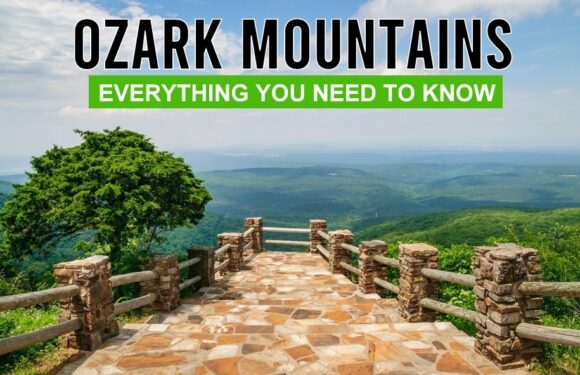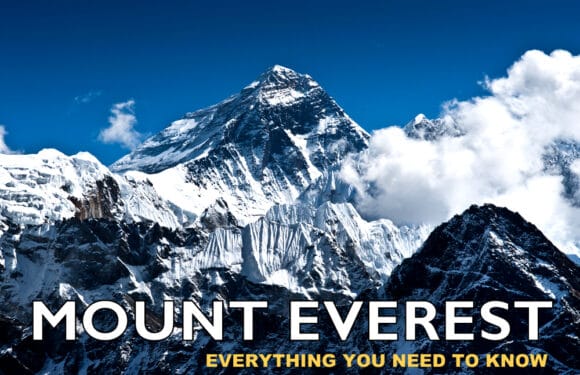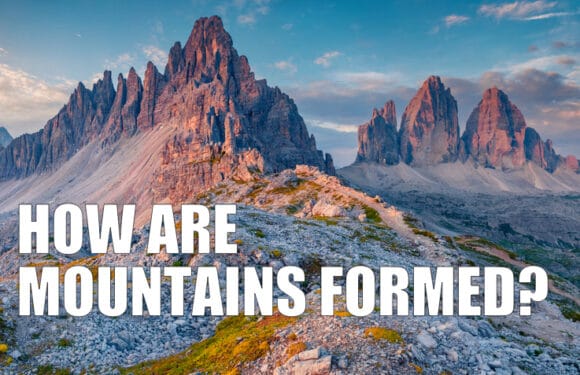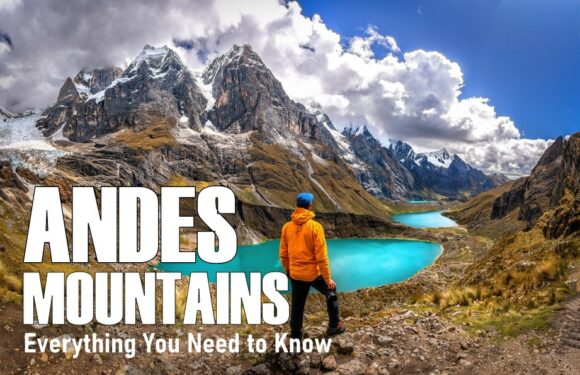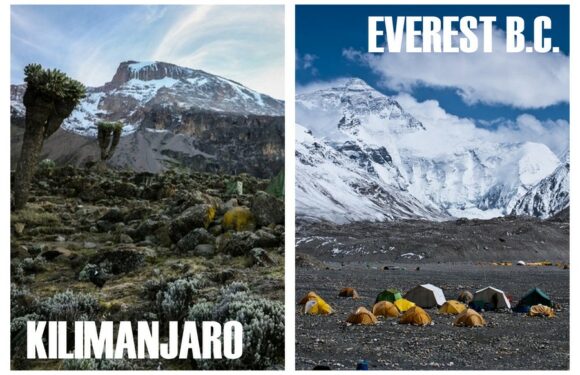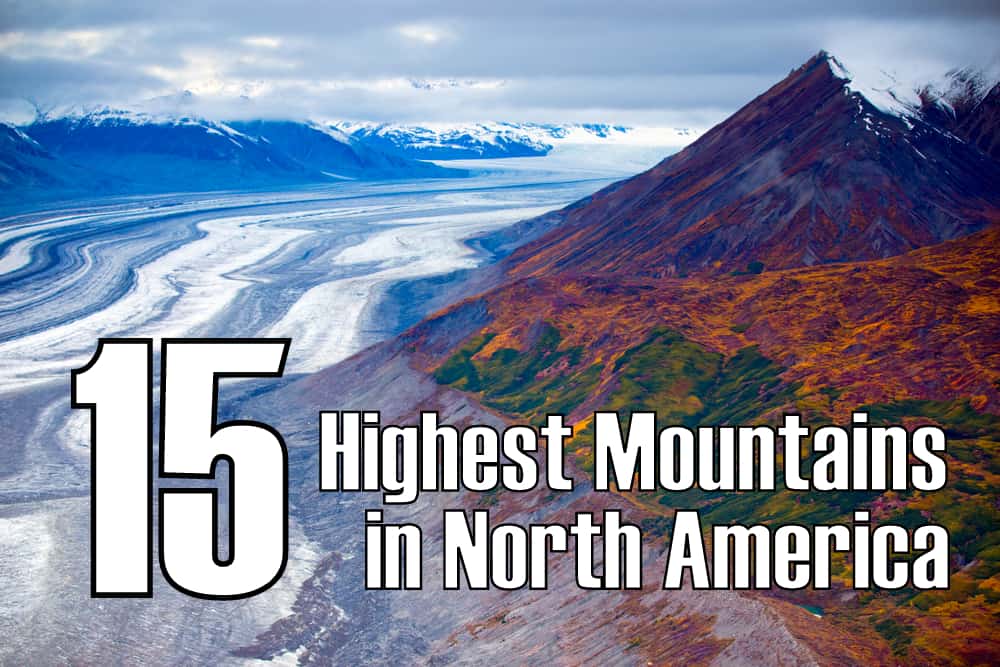
Major Mountain Ranges of North America
North America has its fair share of sky scraping peaks.
From the ice capped summits of the Alaskan wilderness to the picturesque landscapes of Canada’s mountain ranges, these mountains are geological wonders that beg to be seen.
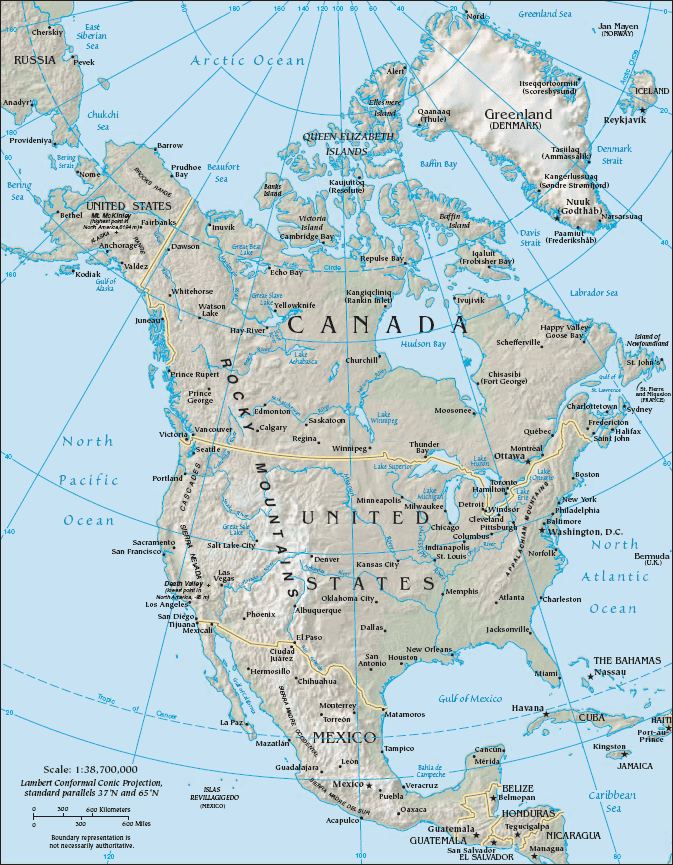
The primary cause of the formation of North American mountain ranges lies in the movement and collision of tectonic plates. The continent’s mountain ranges were formed through a complex geological history.
Let’s explore the major mountain ranges of North America.
Rocky Mountains
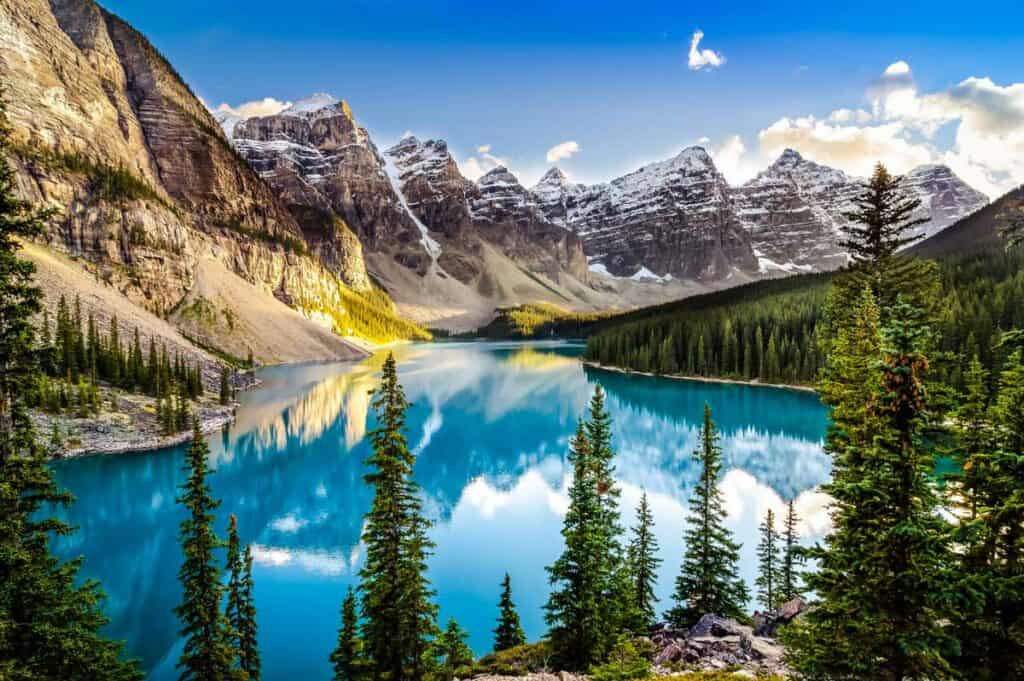
Spanning over 3,000 miles from British Columbia in Canada to New Mexico in the United States, the Rockies stand as a monumental range filled with remarkable peaks, including the highest, Mount Elbert, soaring to 14,440 feet. With numerous peaks exceeding 14,000 feet, the Rockies offer a myriad of outdoor activities, including hiking, skiing, and wildlife viewing.
Sierra Nevada
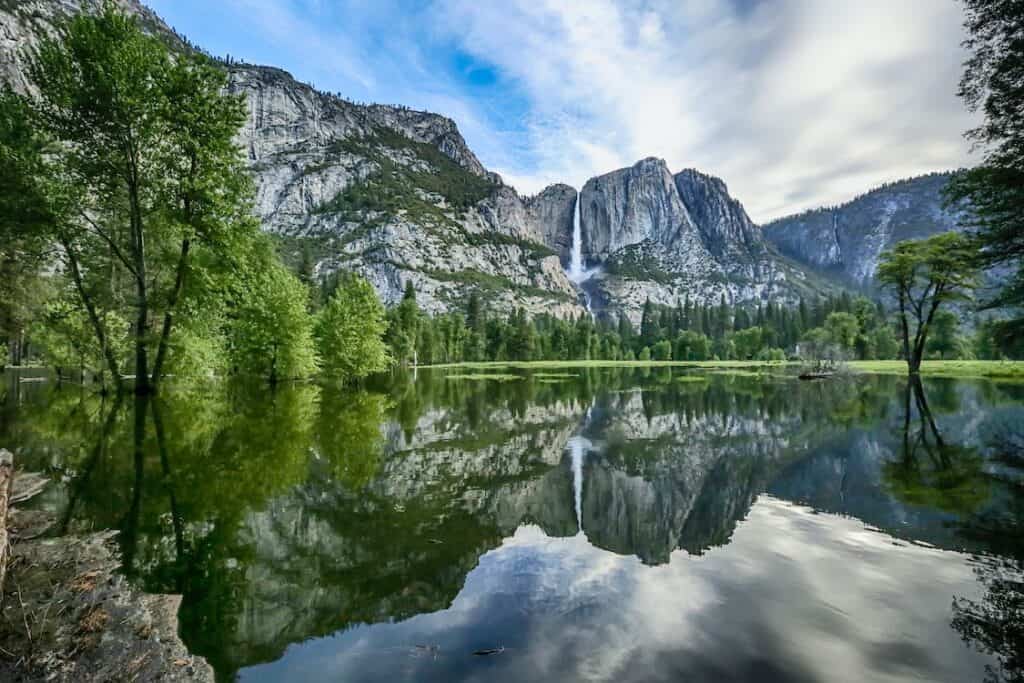
Stretching along the eastern edge of California, the Sierra Nevada is renowned for its striking granite peaks. The anme translates to “Snowy Range” in Spanish. The highest peak in the contiguous United States, Mount Whitney, whose elevation is 14,505 feet, is located here. This range also houses the world-famous Yosemite National Park.
Cascade Range

Extending from British Columbia, Canada, to California, the Cascades feature several volcanic peaks, including Mount Rainier (14,411 feet) and Mount Hood (11,240 feet). Renowned for its scenic beauty and volcanic terrain, this range offers a variety of outdoor recreational opportunities.
Coast Mountains
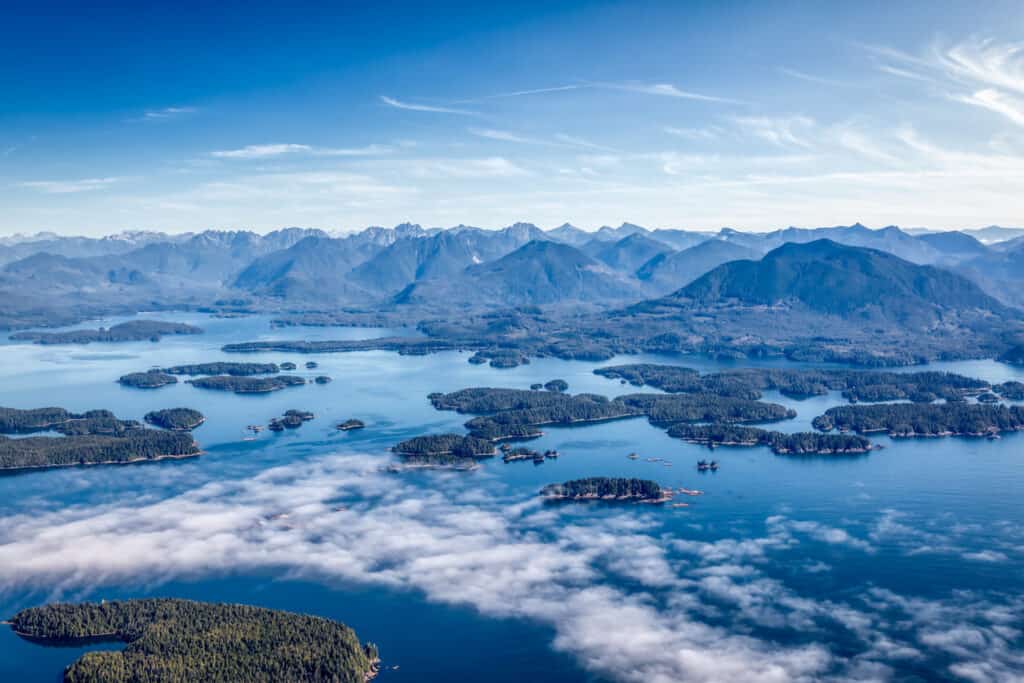
Hugging the Pacific Coast from Alaska to British Columbia, the Coast Mountains showcase glaciers, fjords, and stunning coastal vistas. Mount Logan, Canada’s highest peak towering at 19,551 feet, is a remarkable feature of this range, contributing to its rugged charm and remote allure.
Appalachian Mountains
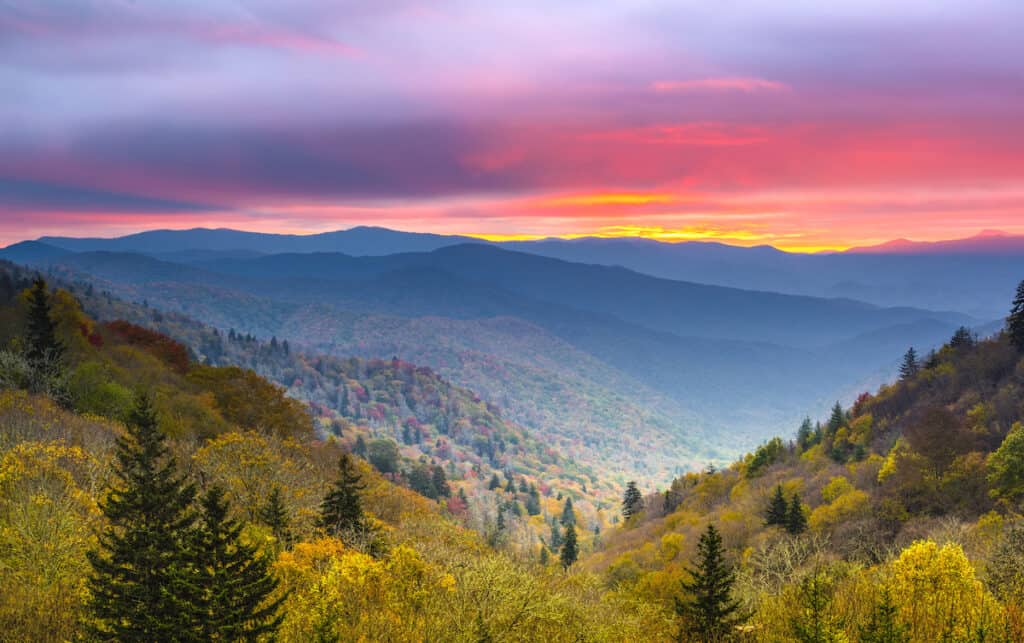
Spanning the eastern region of North America, the Appalachian range spans approximately 1,500 miles from Canada’s Newfoundland to Alabama in the U.S. While not towering in height compared to some Western ranges, its diverse landscape is steeped in biodiversity. Mount Mitchell (6,684 feet) in North Carolina is the highest peak in this range, while the Appalachian Trail offers a historic and iconic long-distance hike, attracting adventurers worldwide.
Adirondack Mountains
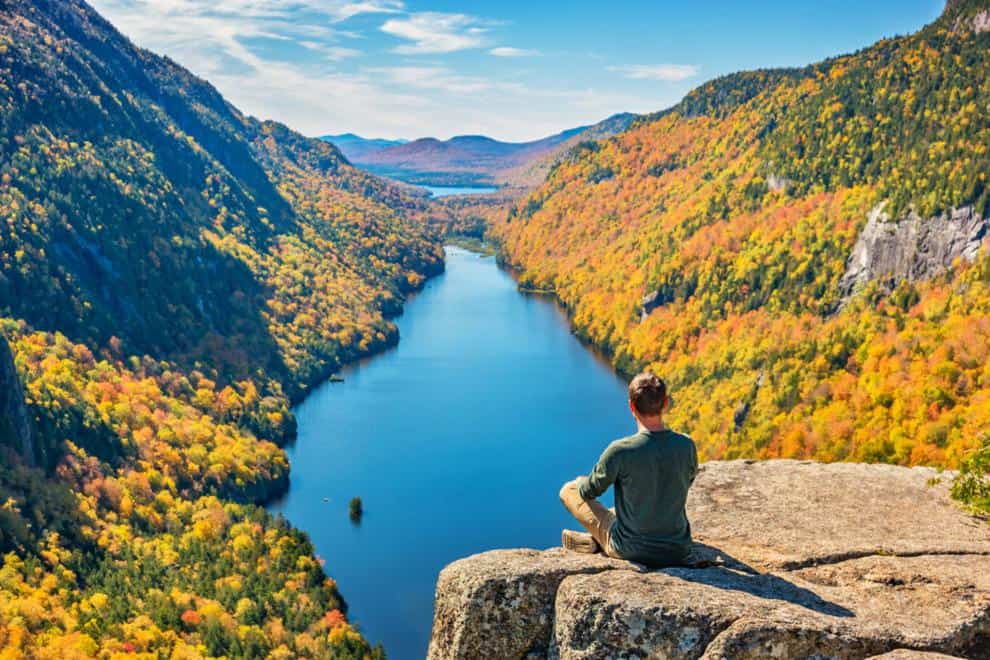
Located in upstate New York, the Adirondacks feature over 40 peaks surpassing 4,000 feet in elevation. Mount Marcy, the highest point in New York state, stands at 5,344 feet. The region’s tranquil lakes and dense forests make it a haven for nature enthusiasts.
Chugach Mountains
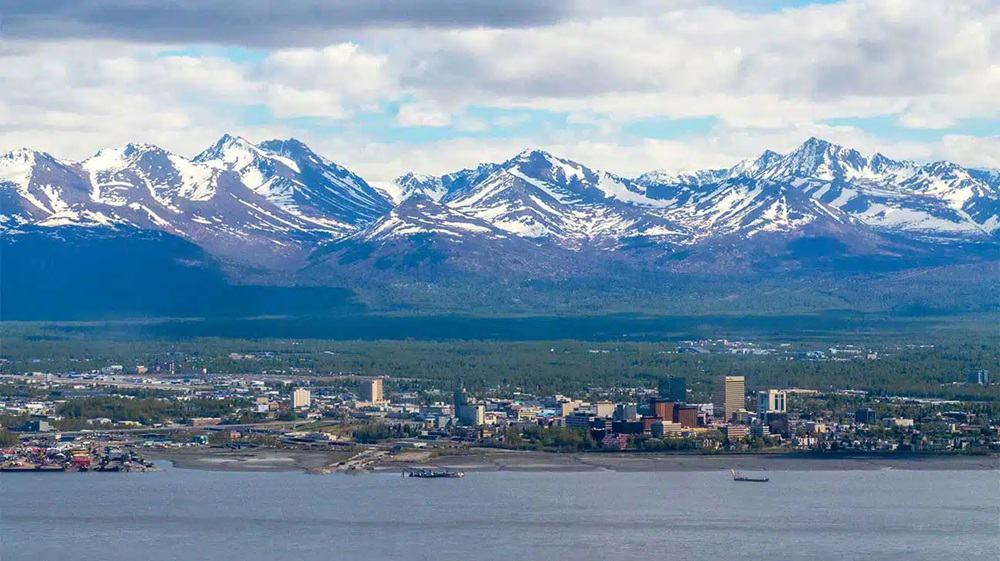
Gracing Alaska’s southern coast, the Chugach Mountains display dramatic fjords and rugged terrain. Mount Marcus Baker, the highest peak in the Chugach Range, reaches 13,176 feet. This region encompasses Chugach State Park, offering diverse outdoor activities and stunning landscapes.
Brooks Range

Situated in Alaska’s northern wilderness, the Brooks Range remains a vast and remote expanse, virtually untouched. Its highest peak, Mount Isto, stands at 9,060 feet, and this range provides a pristine wilderness experience with unparalleled beauty.
Sierra Madre Occidental
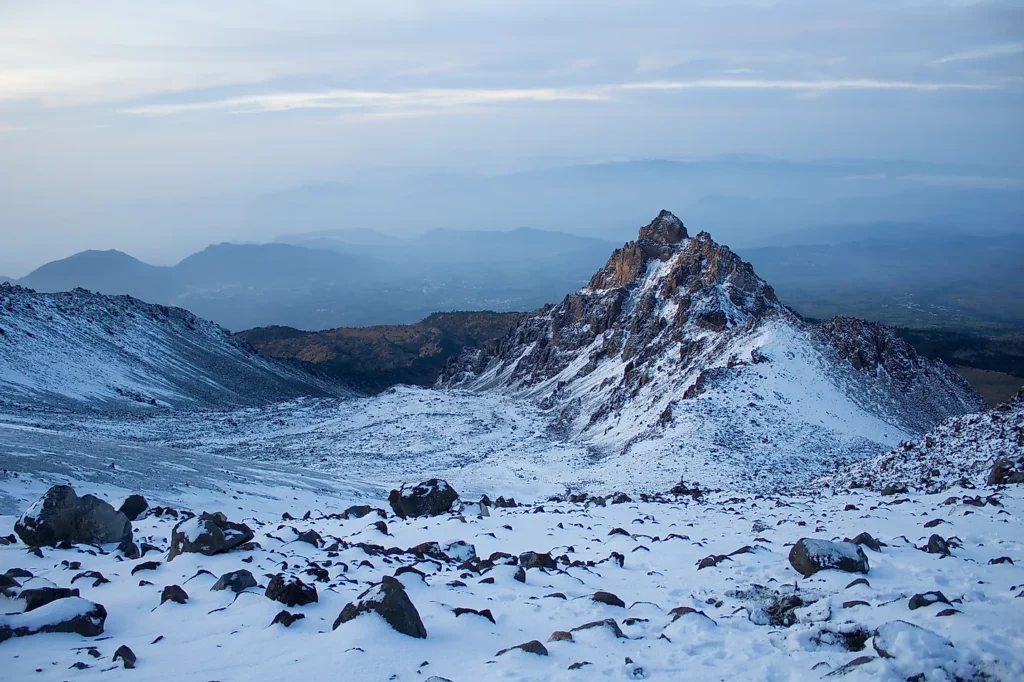
Extending from the U.S.-Mexico border down through western Mexico, the Sierra Madre Occidental encompasses vast expanses of rugged terrain and impressive peaks. Mexico’s highest point, Pico de Orizaba, stands tall at 18,491 feet, making it the third highest peak in North America (and yes, Mexico and Central America are considered to be part of North America).
Sierra Madre Oriental
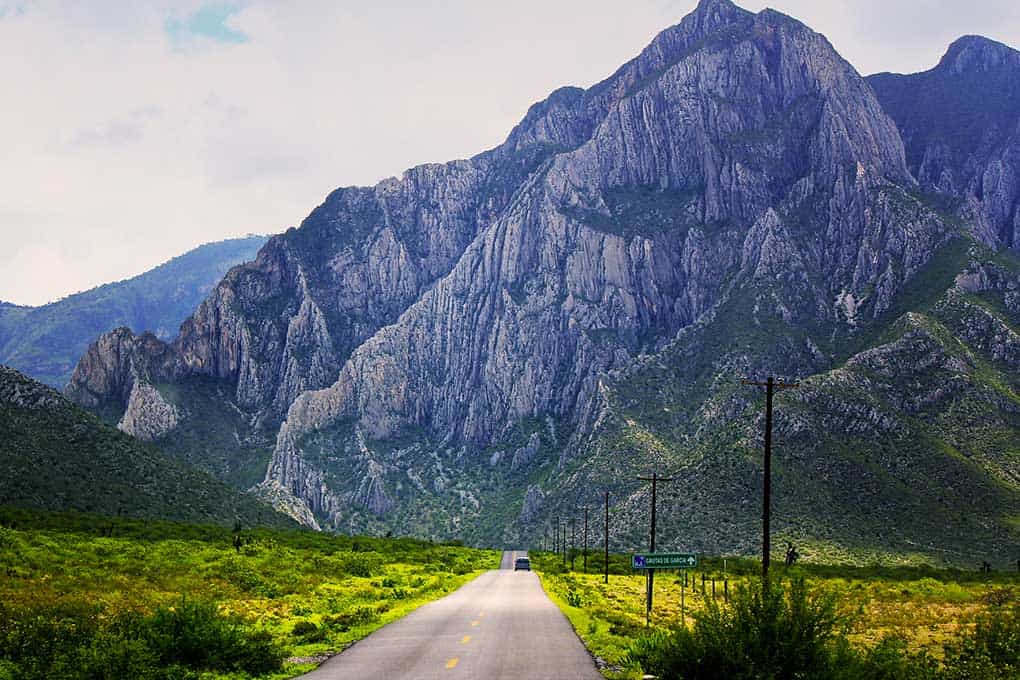
Running parallel to the Gulf of Mexico, the Sierra Madre Oriental stretches from northern Mexico into the southeast . While not as towering as its western counterpart, it is characterized by deep canyons, forested slopes, and diverse wildlife. Pico de Venado (14,015 feet) ranks among its notable peaks.
Trans-Mexican Volcanic Belt
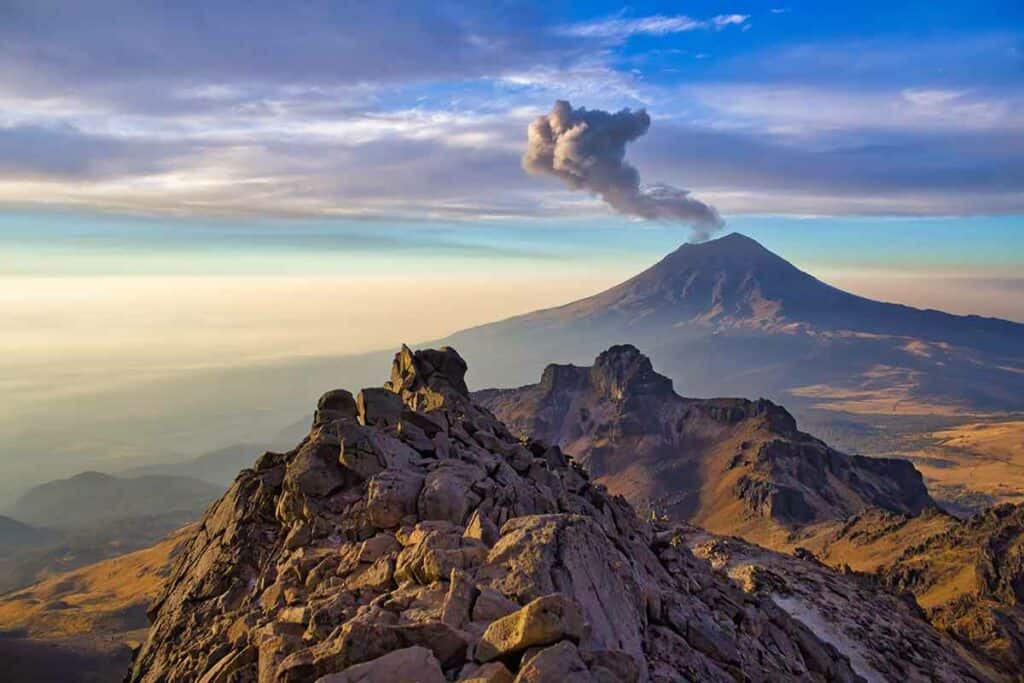
Stretching across central Mexico, this volcanic range includes several prominent peaks and volcanic systems. Popocatépetl, the second highest peak in Mexico at 17,802 feet, and Iztaccihuatl, are among the most famous volcanoes in this range. These peaks are not only significant geologically but also hold cultural importance in Mexican folklore.
What are the Tallest Mountains in North America?
Let’s take a look at the 15 highest mountains in North America, their height and location.
1. Denali (20,310 feet / 6,190 meters)
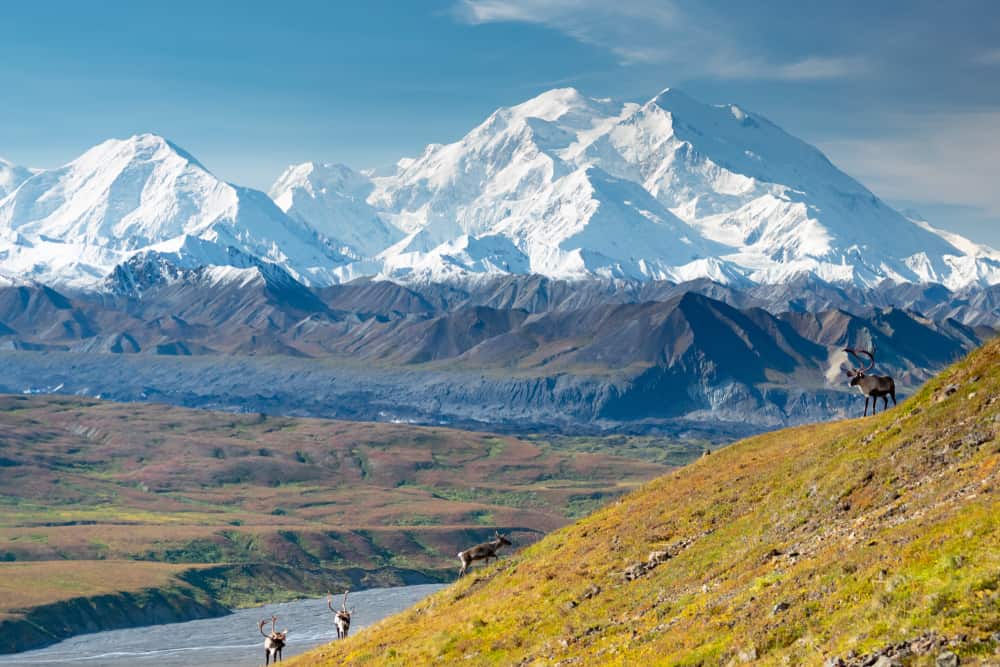
Denali, formerly known as Mount McKinley, is the tallest peak in North America.
Located in Alaska, the most geologically active region on the continent, Denali is the apex of the Alaska Range. What makes Denali truly “stand out” isn’t just its summit, but its staggering 18,000 foot rise from base to peak. That rise surpasses even that of Everest!
Venturing onto Denali means subjecting oneself to the powerful forces of nature. Its temperatures can plummet to an unimaginable -94F (-70C) while wind can rage at speeds of up to 150 miles per hour. Denali is covered in snow and ice, and has 45-mile long glaciers. It is a truly inhospitable yet breathtaking environment.
2. Mount Logan (19,541 feet / 5,956 meters)
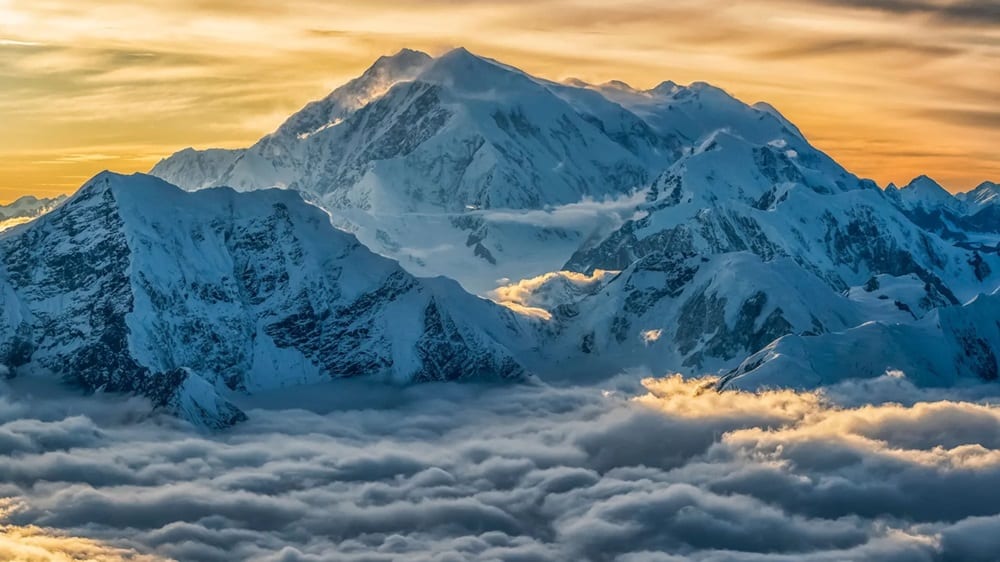
Canada boasts its own titan with Mount Logan.
Residing in the Saint Elias Mountains of the Yukon Territory, Mount Logan proudly holds the title as the second tallest mountain in North America and Canada’s highest peak. The mountain still grows at a rate of 0.35 mm annually due to ongoing tectonic activity.
However, Mount Logain’s grandeur extends beyond its height. With an immense base measuring 25 miles, adorned with 12 peaks, it boasts the most expansive non-volcanic mountain base in the world. It covers an area of approximately 385 square miles.
Mount Logan is named after Sir William Edmond Logan, the founder of the Geological Survey of Canada. It is part of Kluane National Park and Reserve, a UNESCO World Heritage Site.
3. Pico de Orizaba (18,491 feet / 5,636 meters)
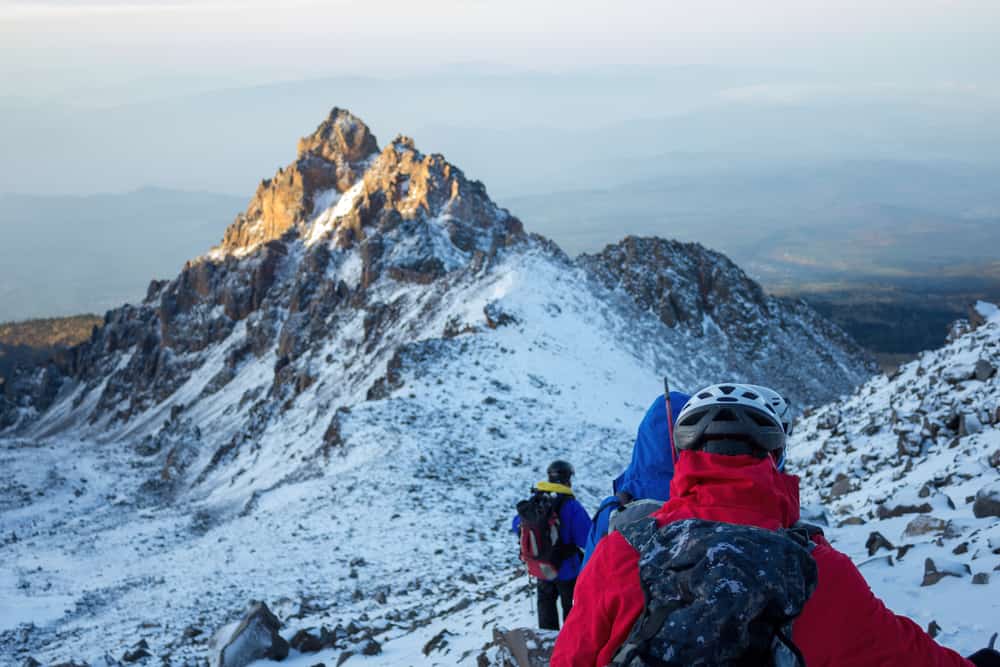
In the heart of Mexico’s Cordillera Neovolcanica, stands Pico de Orizaba.
A dormant stratovolcano, Pico de Orizaba is revered as Mexico’s tallest mountain. It sits about 120 miles east of Mexico City and is visible from nearly 70 miles away. It has a Nahuatl name, Citlaltépetl, which means “star mountain.” Pico de Orizaba is an emblem of Mexico’s rich geological heritage. It was a culturally significant mountain for the Totonac and Aztec people and is featured in several mythologies.
Pico de Orizaba is home to Mexico’s largest and few remaining glaciers, the Gran Glaciar Norte. This makes it a unique geological formation within Mexico and one of the few places in the country where glaciers still exist.
4. Mount Saint Elias (18,008 feet / 5,489 meters)
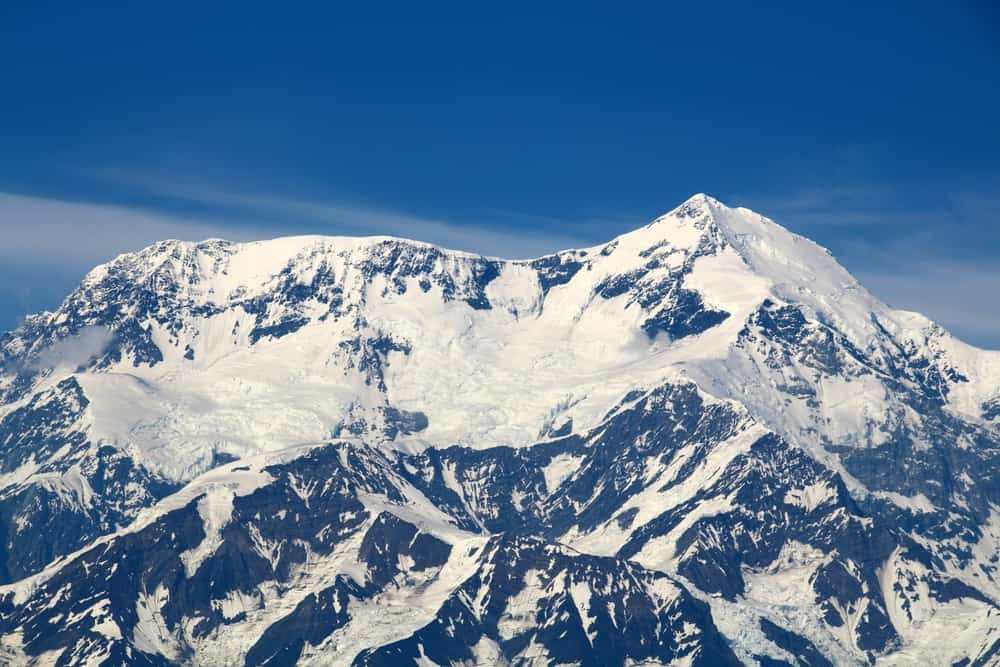
Mount Saint Elias is the fourth highest peak in North America.
Designated as Boundary Peak 186, this summit spans the geographical boundary between Alaska and the Yukon, making it the second highest peak in both Canada and the United States. Its presence boasts one of the largest icefields in the region. It casts a majestic silhouette against the skyline, reaching its heights via a remarkably steep incline.
The mountain was named after Saint Elias, an ancient prophet, by Vitus Bering, a Danish explorer. But its cultural significance can be traced to the indigenous Tlingit people, who reverently refer to the peak as the “Mountain Behind Icy Bay” and “Big Mountain.”
5. Popocatépetl (17,749 feet / 5,410 meters)
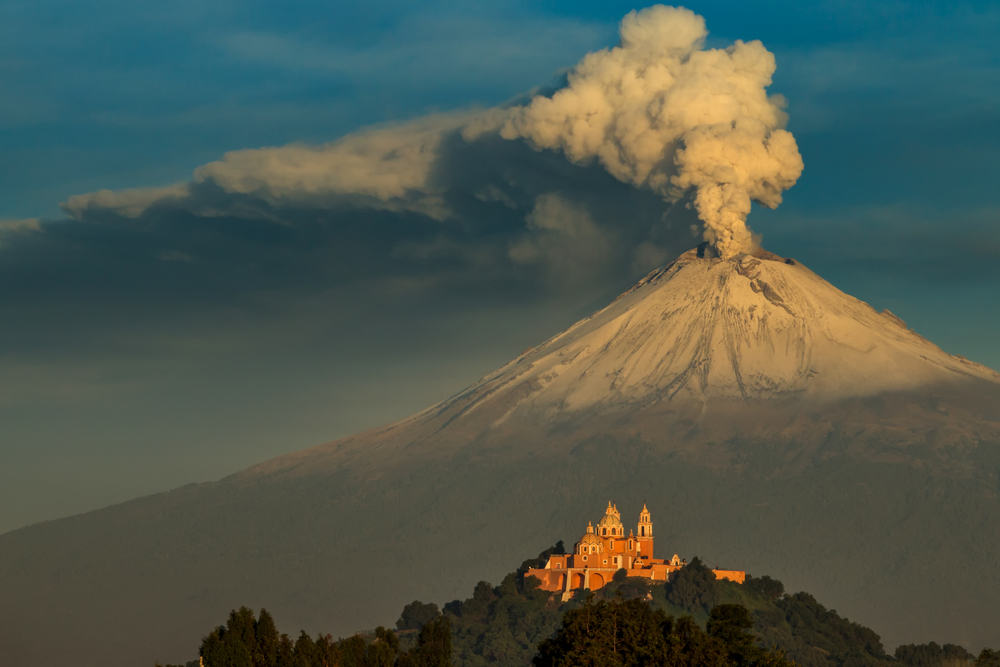
Rounding off the top five highest mountains in North America is the fiery stratovolcano, Popocatépetl. With it’s location on the Trans-Mexican volcanic belt, the peak serves as an active example of the region’s volcanic legacy.
Popocatépetl means “Smoking Mountain” in Nahuatl, fitting for an active volcano known for occasional eruptions. Revered in Aztec mythology, it is often linked with the nearby volcano Iztaccíhuatl as star-crossed lovers. Popocatépetl attracts many climbers despite its potential hazards. It emanates an aura of danger and mystique.
6. Mount Foraker (17,400 feet / 5,304 meters)
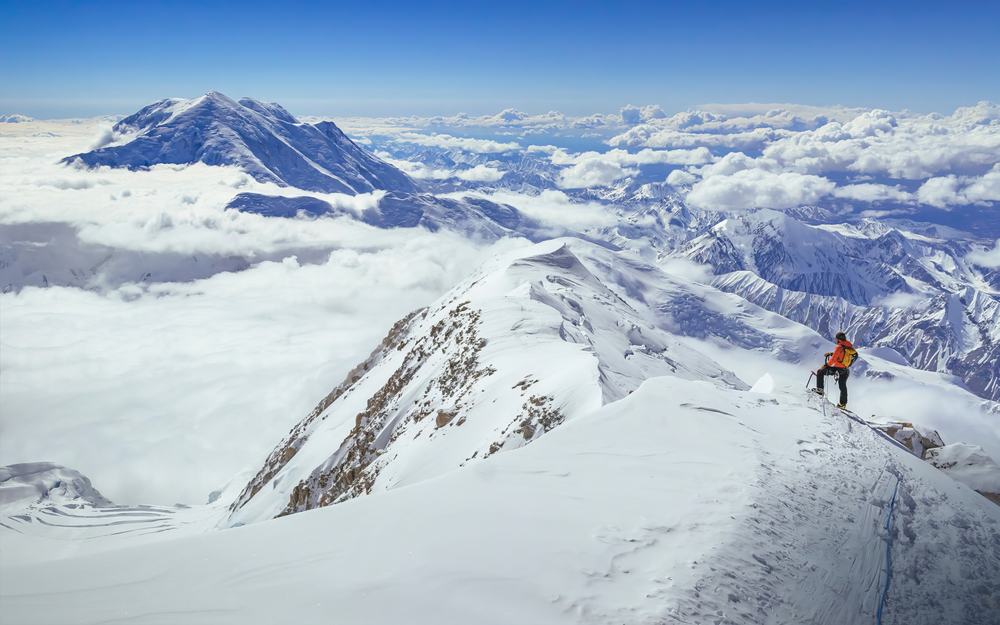
Mount Foraker, known as Denali’s sister peak, is situated in the rugged Alaska Range.
Despite its proximity to Denali (just 14 miles southwest of the famous peak), Mount Foraker possesses a distinct beauty. It has an elegant, pyramid-like shape and sharp ridges. The mountain’s southern aspect, known as the Sultana Ridge, presents one of the most challenging climbs in North America.
7. Mount Lucania (17,257 feet / 5,260 meters)
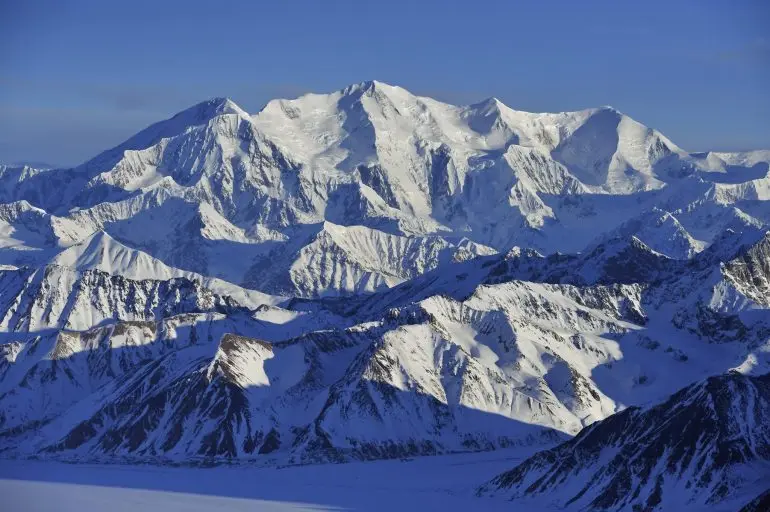
Mount Lucania, located in Canada’s Yukon Territory, ranks as the third tallest peak in Canada.
Discovered and scaled in 1937 by climber Bradford Washburn, Mount Lucania, stands tall in the Saint Elias Mountains. The mountain was named in 1897 by a Spanish exploere, the Duke of the Abruzzi, after his ship, the RMS Lucania.
8. Iztaccíhuatl (17,159 feet / 5,230 meters)
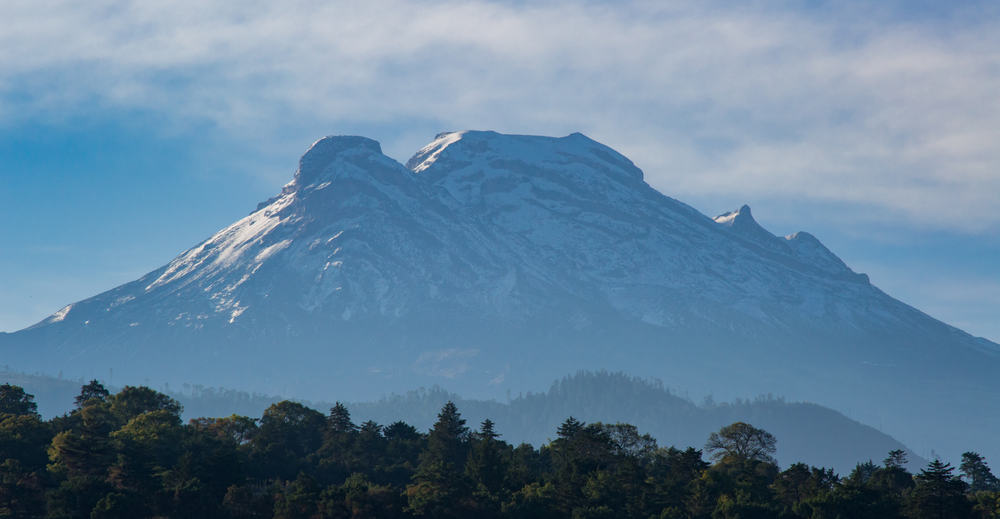
Iztaccíhuatl is a dormant volcano known as the “Sleeping Woman” due to its shape resembling a woman lying down.
The mountain is part of Mexican folklore alongside another mountain, Popocatépetl. The legend tells the tragic tale of two lovers, a warrior named Iztaccíhuatl and a princess named Popocatépetl. In death, they were transformed into volcanoes which are seen as symbols of their love.
9. King Peak (16,972 feet / 5,173 meters)
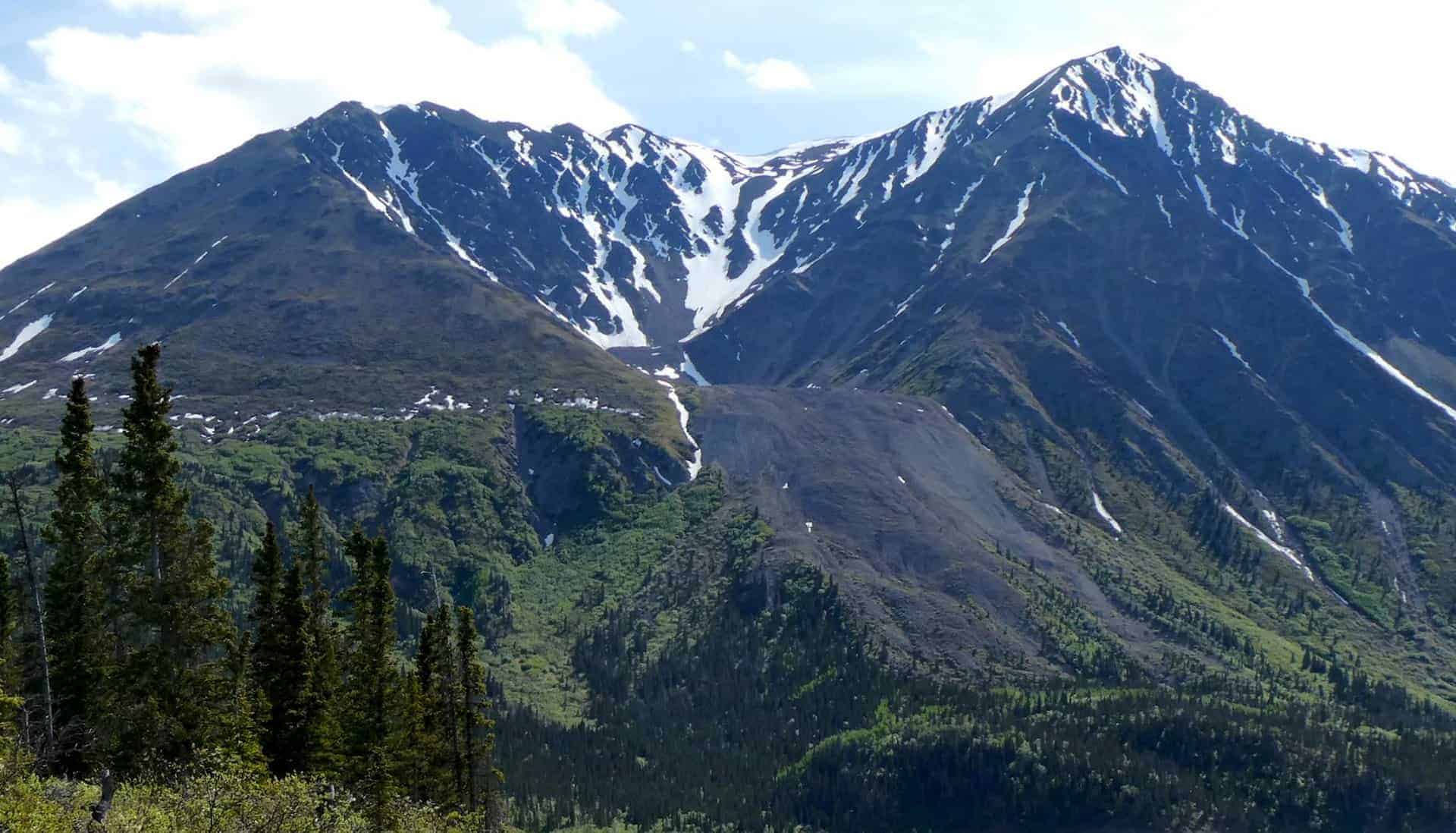
King Peak is located in the Saint Elias Mountains on the Alaska-Yukon border.
Part of Canada’s highest mountain range, it remains one of the least explored peaks in the region due to its remote location and challenging weather conditions. The first people to climb King Peak were students from the University of Alaska, in 1952.
10. Mount Bona (16,550 feet / 5,044 meters)
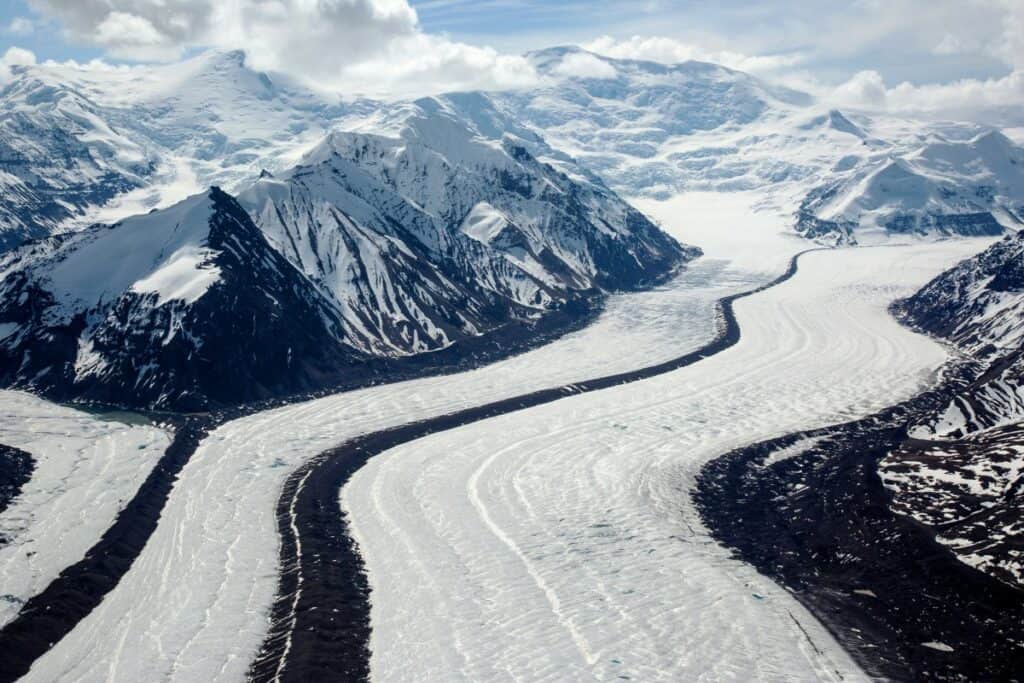
Mount Bona is part of the Saint Elias Mountains of Alaska.
Bona is the highest volcano in the United States and the fourth highest in North America, bested only by the Mexico’s three highest volcanoes. Named after a racing yacht, its volcanic origins and massive expanse make it a notable landmark in the region. The mountain’s massif is covered almost entirely by icefields and glaciers.
11. Mount Steele (16,470 feet / 5,020 meters)
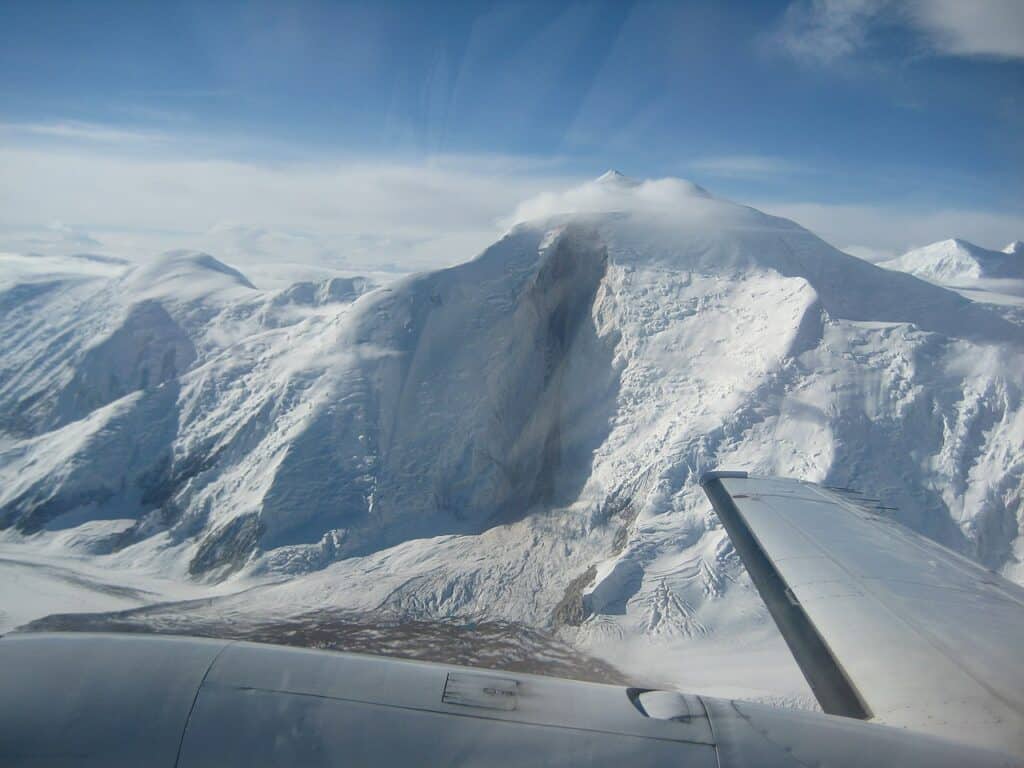
Mount Steele, located in Yukon’s Saint Elias Mountains, is the fifth highest peak in Canada.
Mount Steele and its surroundings are part of the traditional territories of indigenous peoples such as the Champagne and Aishihik First Nations and the Kluane First Nation. It was named after Sir Sam Steele, a distinguished Canadian police officer.
12. Mount Blackburn (16,390 ft / 4,996 meters)
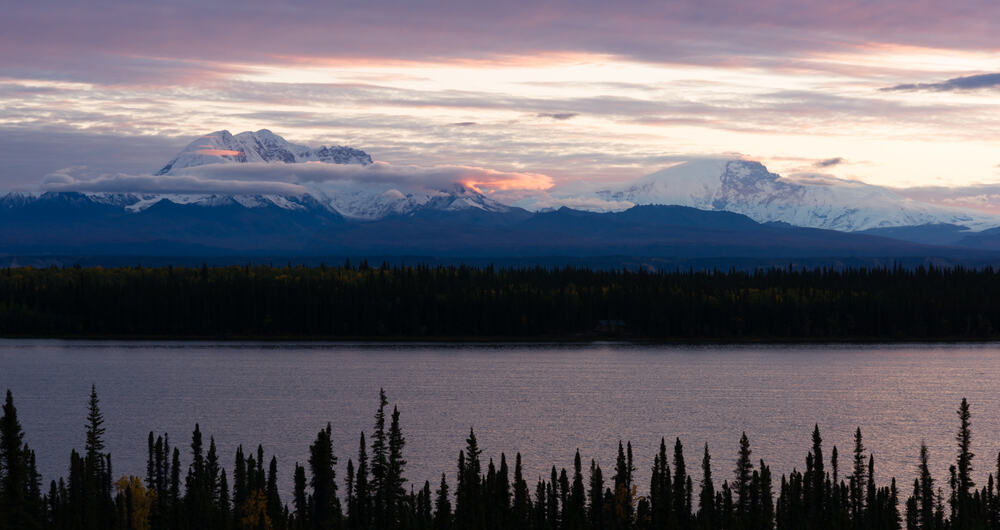
Mount Blackburn is located in Alaska’s Wrangell Mountains.
Formed by ancient volcanic activity, Mount Blackburn is part of the Wrangell Volcanic Field. The mountain is known for its extensive icefalls and array of glaciers, including the Kennicott Glacier. It was named after Joseph Clay Stiles Blackburn, a senator from Kentucky and national park advocate.
13. Mount Sanford (16,237 ft/4,949 m)
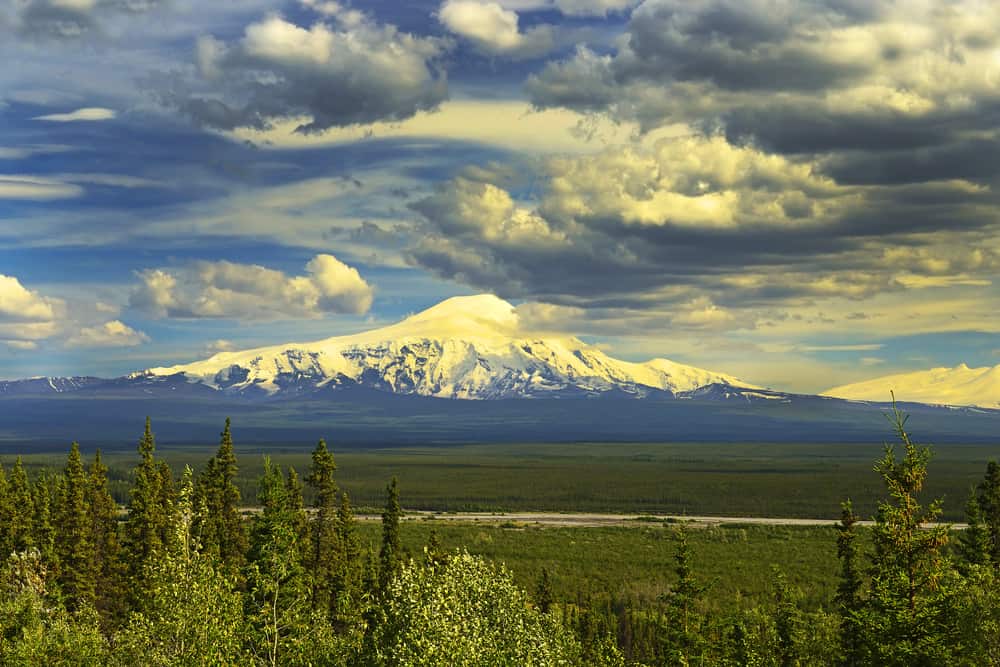
Mount Sanford is an ancient shield volcano in Alaska’s Wrangell Volcanic Field.
Formed through millennia of volcanic activity, the mountain has a massive crater measuring over 6 miles in diameter. The peak was named by Lieutenant Henry T. Allen of the U.S. Army after the Reuben Sanford family, an American politican and military officer.
14. Mount Wood (15,945 feet / 4,860 meters)
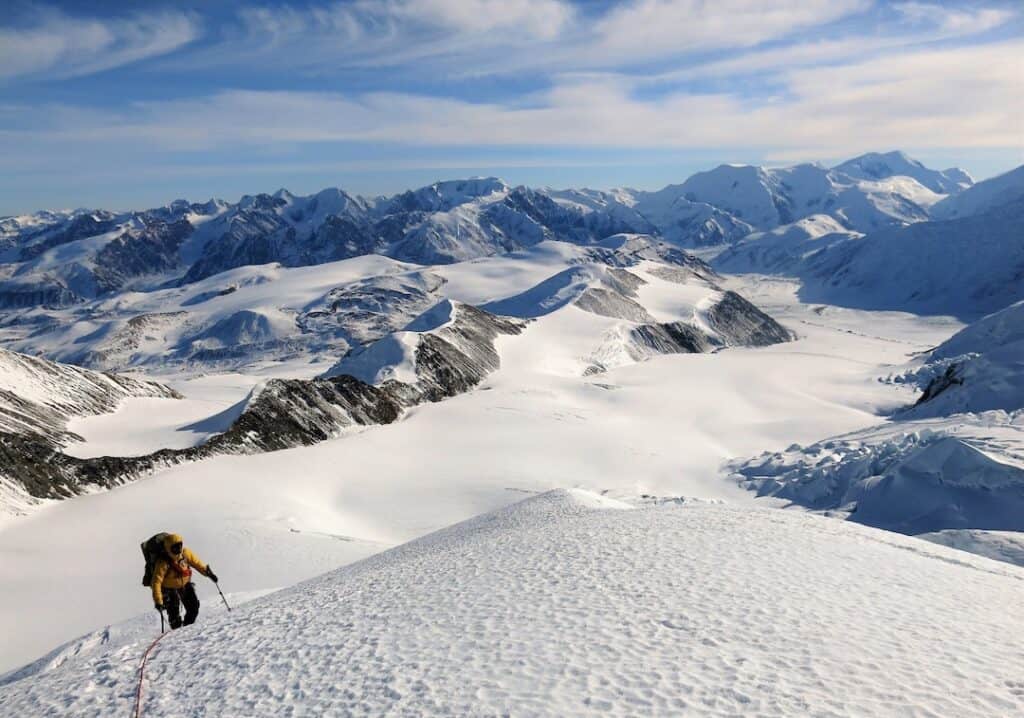
The 14th highest peak in North America is Mount Wood, located in Yukon’s Saint Elias Mountains.
Like many of its neighboring peaks in the Saint Elias Mountains, Mount Wood boasts extensive glacier coverage. The mountain was named after William Robert “Bob” Wood, a Canadian geologist who conducted extensive surveys and studies in the Yukon during the late 19th and early 20th centuries.
15. Mount Vancouver (15,787 feet / 4,812 meters)

Last on our list is Mount Vancouver of the Saint Elias Mountains.
The peak is named named after Captain George Vancouver, a British Royal Navy officer who explored the areas surrounding present day British Columbia, Alaska, Washington, Oregon and California. Vancouver himself named many mountains after his officers and friends including Mount Baker, Mount St. Helens and Mount Rainier.
How Tall is Mount Kilimanjaro?

Mount Kilimanjaro is the tallest mountain in Africa and one of the Seven Summits. It stands 19,341 feet or 5,895 meters above sea level and would therefore be the third tallest peak in North America if it were actually located there.
Like several entries on this list, Mount Kilimanjaro is a volcano. It has three volcanic cones – Kibo, Mawenzi, and Shira, of which only Kibo is dormant and could possibly erupt again. Note that Mount Kilimanjaro is considered a beginner’s mountain that can be scaled by anyone with average fitness. Our expert guides and a full support crew accompany clients on their quest for the summit.
Interested in climbing Kilimanjaro? See our trip dates and prices.



















































